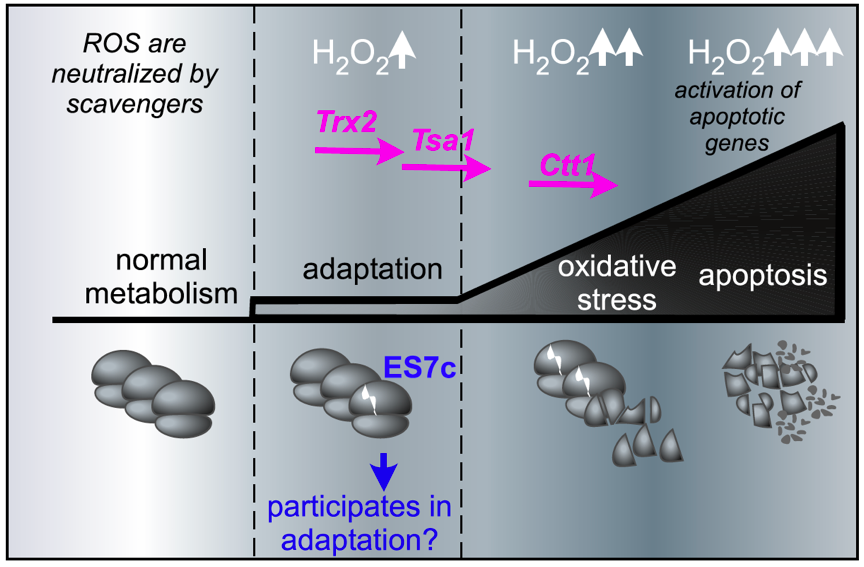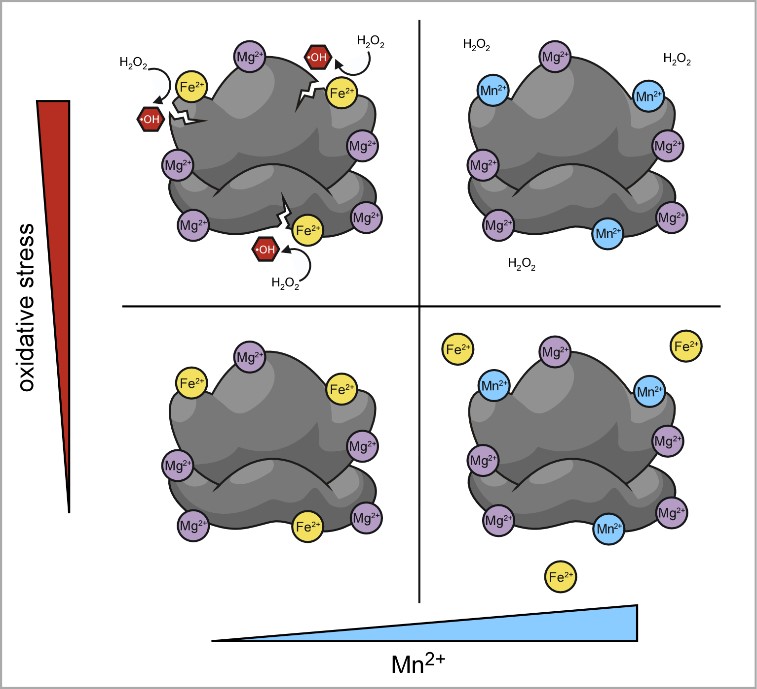Stressed Ribosomes
Stressed Ribosomes
Stressed Ribosomes
How does stress affect ribosomes?
Cleavage of ribosomal RNA and stress adaptation. All living cells regularly encounter stressful conditions; thus, it is not surprising that cells have evolved a wide range of sophisticated survival mechanisms to combat the adverse effects of stress and adapt to new conditions. One of the best-studied environmental stressors is exposure to elevated levels of reactive oxygen species (ROS), or oxidative stress.

Aside from causing damage, ROS may also function as signal transducers and activate stress-defense mechanisms. In our studies, we address the question of whether ribosomes could be part of this signaling network. We made the interesting discovery that low doses of oxidants can promote endonucleolytic cleavage of expansion segment 7 (ES7L) within 25S ribosomal RNA (rRNA) in yeast (Shedlovskiy et al., 2017). This rRNA region, which eukaryotes gained during evolution, is located on the 60S ribosomal subunit surface and plays a largely uncharacterized regulatory role. We found that ribosomes cleaved in ES7L are translationally competent and may help cells adapt to acute oxidative stress, a phenomenon known as oxidative hormesis. Thus, our findings suggest that ES7L cleavage provides ribosomes with additional properties that are beneficial for stress resistance.
Chemical hydrolysis of ES7L and the role of metal ions. We also found that a Fe2+-dependent chemical rather than enzymatic hydrolysis is responsible for rRNA strand scission within ES7 (Zinskie et al., 2018). We demonstrated that redox-active Fe2+ binds to the rRNA and, in the presence of H2O2, the sugar-phosphate backbone of ES7L rRNA is attacked by hydroxyl radicals produced locally via a Fenton reaction. Moreover, Mn2+ can replace rRNA-bound Fe2+ and attenuate rRNA cleavage (Smethurst et al., 2020).

Future studies. The main question we are interested in addressing is whether ES7-cleaved ribosomes constitute a pool of so-called “specialized ribosomes” that selectively translate mRNAs encoding for antioxidant proteins and enzymes.
